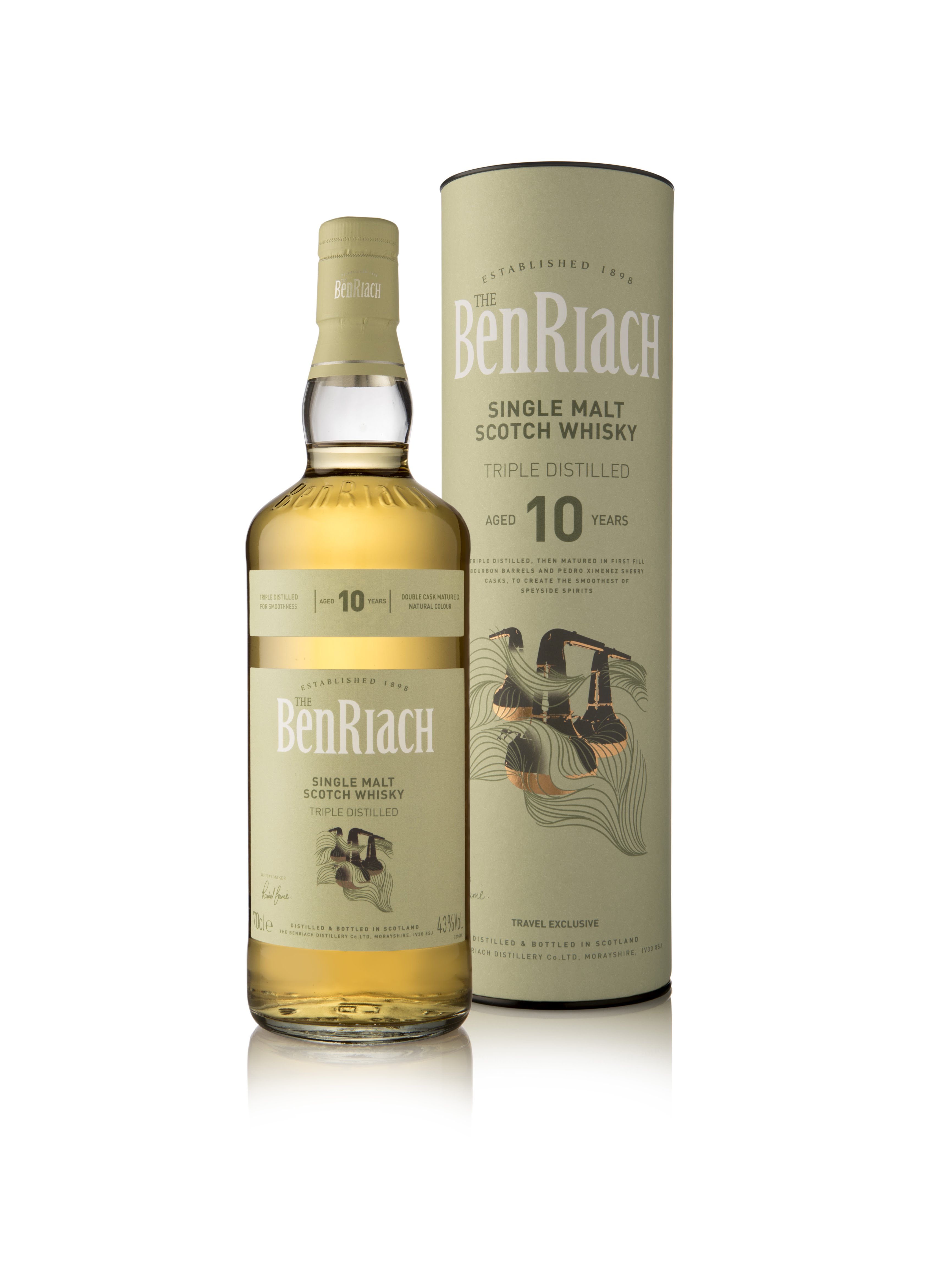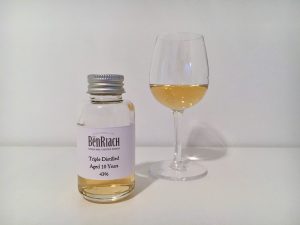When one thinks of triple distilled whisky, Speyside isn’t exactly the first part of the world that springs to mind. Triple distillation has long been mostly synonymous with Irish whiskey, although it’s something of a misconception that it was the original style of Irish whiskey. The journey to triple distilled spirit in Ireland was an interesting one, and one which bears an interesting comparison with the introduction of the same process in Scotland today.
It was the introduction of the malt tax to Ireland in 1785 which gave birth to the quintessentially Irish style of single pot still whisky, utilising unmalted barley (and occasionally other grains such as oats) in order to reduce tax liability. The trouble with this mash bill is that distillation becomes rather inefficient and in order to increase yield to acceptable levels a third trip through a pot still is necessary – hence the practice of triple distillation was established.
This third distillation in order to up the spirit yield – and inadvertently creating a spirit lighter in profile than a double-distilled equivalent from the same mash – seems somewhat at odds with the ethos of Irish whiskey at that time. Throughout the earlier half of the 19th century Irish whiskey prided itself on being a heavier, fuller bodied spirit than the silent spirit produced in new column stills or the blended Scotch gaining in popularity across the sea. However with a whole new market opening up of drinkers looking for a new spirit (due to the phylloxera outbreak destroying cognac production) and favouring a light, consistent character Irish whiskey was losing market share at an alarming rate. In an attempt to stem the losses marketers grabbed hold of triple distillation as a selling point, promising that lighter, cleaner spirit these new whisk(e)y drinkers were yearning for.
But this is supposed to be a review of a Scotch malt whisky, so why an introduction mapping the history of triple distillation in Ireland? Well of course Scottish malt distilleries – with the exception of a few in the lowlands, although even there the practice of triple distillation was not as pervasive as is commonly believed – have historically distilled twice, and have performed rather successfully over the years. So why has there been a trend in recent years for distilleries in Scotland to (for at least part of the season) triple distill malt spirit? The answer lies to some extent in marketing, but in a reverse of the original reasoning behind marketing triple distillation in Ireland.
With the success of single malt Scotch whisky today, bottles find themselves more and more tightly squeezed onto finite shelves and with today’s informed consumer looking for uniqueness in and of itself rather than a particular style, quirks and innovations are sure to hold attention. What was used as a selling point in an industry that was dying in Ireland is now being used as a differentiator in a booming industry in Scotland. The danger is – particularly in an increasingly global world of whisky production – that innovation can lead to dilution of identity and what made something successful in the first place. Time will tell!
Far from dilution of identity, quirks and innovations have become somewhat synonymous with BenRiach in its latter-day form. After suffering for much of its lifetime due in part to timing and to being in its neighbour Longmorn’s shadow, BenRiach was re-opened in 1965 after a long silent period. During this period its owners were the first to reintroduce peated malt to Speyside and were also known to experiment with triple distillation, indeed there was third still used for this purpose until 1998. Unfortunately, as a single malt it suffered from poor reputation and did not catch on.
It was under the ownership of the Billy Walker-led consortium that BenRiach really found its feet. Continuing this tradition of experimentation, BenRiach has gained a reputation not only for quality but for the use of some of the most eclectic wine casks seen in Scotland. In addition, 2012 saw floor malting return to BenRiach following on from the return of triple distillation for one week each year since 1998.
Without the additional still available, triple distillation at BenRiach today takes the form of a second run through the spirit still, with the standard BenRiach wide cut taken from the spirit (one of the largest middle cuts in Speyside).
The acquisition of The BenRiach Distilling Co by Brown-Forman in 2016 led some commentators to fear for this spirit of experimentation, however Global Brand Ambassador (and recently inducted Keeper of the Quaich) Stewart Buchanan insists this has not been the case, with the Louisville-based corporation taking a hands-off approach.
One aspect in which the new owner has been able to lend a hand has been expansion into new markets, a key example being global travel retail. BenRiach made forays into departure lounge stores last year with unpeated and peated quarter cask expressions, and is continuing this development with a new triple distilled expression. We may see further limited offerings in the same space appear later this year.
Today’s expression is the new 10 Year Old Triple Distilled, available from May to global travel retail for around £64. It is an increasingly rare and welcome sight to see an age statement on travel retail shelves, combined with natural colour, the lack of chill filtration and bottling at a reasonable 43% ABV gives this expression some potential.
In general I find triple-distilled malt whiskies to be too light for my taste; without the robustness of an unmalted grain I find that distillation to this degree can remove too much of the grain character resulting in a spirit which relies too heavily on cask for flavour. Will this BenRiach change my mind?
Colour & First Impressions
Pale gold. Fairly light in colour for an expression matured exclusively in first fill casks.
Nose
Surprisingly there is a definite malted barley character to the nose, with a creaminess of lychee and a little cream soda. Top notes of raspberry and apple jolly ranchers. There are spirit-y notes in there but these are sufficiently masked by the heavier malt notes for the most part. A drop of water lightens the nose allowing the fruit to dominate.
Taste
A creamy mouthfeel is quite timid on flavour initially, the weight of the body perhaps overwhelming the delicacy of the triple-distilled spirit. Overcoming its shyness sees crisp orchard fruit – primarily green apple which moves towards softer pear notes and stone fruit. The mid-palate introduces some wood spice along with a background of light malt-cereal.
Finish & Final Impressions
A fairly short finish of cereal leaves behind a touch of fizzy apple sweets.
As a triple distilled whisky this was always going to be light in character, requiring more attention before it reveals its character in full. There is a welcome degree of depth to the nose, although I found this sadly lacking on the palate.
It feels like an obvious comparison but if you are a fan of traditionally triple distilled malts such as Auchentoshan then this expression has a lot to offer with a healthy emphasis on distillery character. I would recommend it ahead of other triple distilled experiments which have come to market in recent times.
Details
- Combination of first fill ex-bourbon and first fill ex-Pedro Ximenez casks
- 10 Years Old
- Naturally coloured
- Non-chill-filtered
- Bottled at 43% ABV
- RRP £64
- Exclusive to global travel retail
My thank you to Spey and BenRiach for kindly inviting me to the distillery during Spirit of Speyside and for providing samples.


